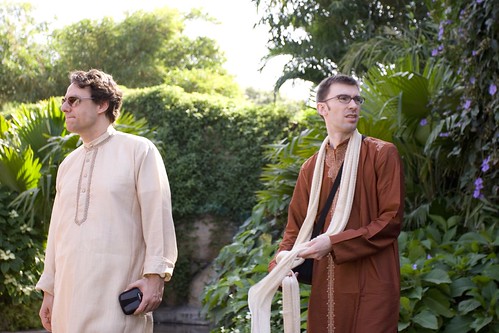India . . . the word conjures up a thousand sights, smells and sounds. There's no doubt that any traveller heading there from the West is in for a culture shock - whether they're staying at a hotel in Paschim Vihar or a hostel in Goa. But that's what makes the trip so worthwhile - the exposure to customs and ideas that you could never experience at home - not in a million years.

That said, a little preparation goes a long way. Immersing yourself in another culture is a fabulous experience, but you don't want to feel so alienated that it becomes uncomfortable, rather than enjoyable. Neither do you want to say or do anything that another person might find offensive. Save some time and trouble with this quick guide to understanding Indian cultural differences.

Getting dressed
Coming from a Western country, you're no doubt rather accustomed to a society where, as the Cole Porter song says, 'Anything Goes'. Mini-skirts, crop tops, tight jeans, swimwear, thongs . . . you can wear pretty much whatever you like and no one will try to stop you. Just ask Miley Cyrus. But that just isn't the case in India. Attitudes to dress are rather conservative. Both men and women tend to keep their legs and shoulders concealed with loose clothing. This is especially important at sacred sites and temples. If you decide to flout this convention and walk around in tight, skimpy apparel, don't be surprised if you find people staring at you and/or expressing disapproval.

What to do with your feet
Rule one: don't point your feet at people. This is kind of the equivalent of the Western disapproval of finger pointing. But in India, it's your trotters that are the source of the problem. This is because they are viewed as unclean. If you do inadvertently direct your toes at someone, demonstrate that you're sorry immediately. You can do this by saying the word or by performing an Indian apologetic gesture - touching your own eyes or face.
Rule two: remove footwear before heading indoors. This is applicable in religious buildings, regular houses and shops. If you're lucky enough to visit an Indian home, you'll notice that many people have two sets of shoes - one for wearing outside and the other for wearing inside.

Left or Right?
The left hand is considered, like both feet, to be dirty. (Yes, it's not particularly welcome news for any left-handed readers out there!). This is because the custom is to use the left hand to take care of any processes associated with going to the toilet. So while you're in India, use your right hand only to pick up and pass items and touch people. If you make an error, be quick to apologise.
Personal privacy and space
In the West, we're used to an abundance of personal space and privacy. Many of us have a room entirely to ourselves and enjoy the right to live, work and travel solo - if we so choose to. India, a nation of over one billion people, is a different kettle of fish. People are very much used to living on top of one another. One bathroom (if there is one!) might be shared between twenty people and it's not uncommon for six, seven or eight individuals to sleep in the same bedroom.

This translates to markedly different attitudes when it comes to interpersonal interaction. Don't be surprised to find people sitting and standing close to you, staring because they're fascinated by your unusual appearance (especially if you're fair-skinned and blonde) and asking you all manner of personal questions. One of the most common is, 'Are you married?' Don't be offended. Either politely decline to answer or feel free to engage in conversation - it's up to you.
Images credit to Google
Images credit to Google





0 Comments
What do you think of this post? Your thoughts are always welcome here. Thanks for dropping by!